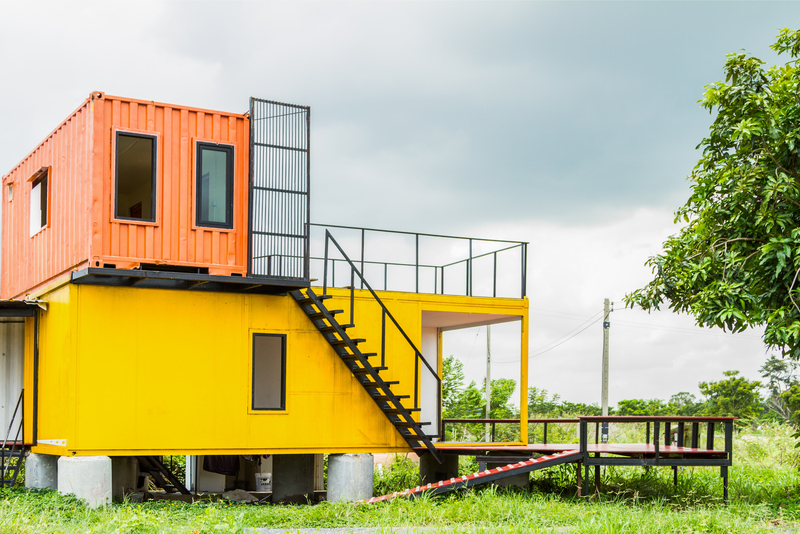Reducing Waste: Recycle Your Old Cooking Gear
Every year, millions of tonnes of kitchenware and old cooking utensils end up in landfills, contributing significantly to environmental pollution. Reducing waste by recycling old cooking gear is a practical and impactful step in curbing this trend. Not only does it help the planet, but it also inspires creativity and resourcefulness at home. In this comprehensive article, we'll explore effective ways to recycle and upcycle old kitchen tools, explaining why kitchen equipment recycling is more important than ever.

Why You Should Recycle Kitchenware and Cooking Gear
Kitchen gadgets are often replaced more frequently than other tools in the home. Whether it's a dented frying pan, a chipped mug, or an outdated coffee maker, throwing these items away seems like the simplest solution. However, recycling your old cookware reduces landfill strain, conserves natural resources, and lessens the carbon footprint involved in producing new products.
- Environmental Impact: Recycling old pots and pans means fewer raw materials are needed to manufacture replacements.
- Economic Benefits: Recycled metals from cooking gear have value and can be repurposed, creating jobs and saving energy.
- Creativity and Community Engagement: Donating or upcycling old culinary tools breathes new life into them and supports local initiatives.
Types of Cooking Gear You Can Recycle
Not everything in your kitchen needs to head straight for the rubbish bin. Here's a list of cooking gear commonly eligible for recycling:
- Non-stick pans and skillets (check with your local facility regarding Teflon coatings)
- Aluminum and stainless steel pots
- Cast iron cookware
- Baking sheets and muffin tins
- Metal utensils and silverware
- Small appliances like toasters, blenders, and coffee makers
- Glass and ceramic cookware (only at select recycling programs)
How to Recycle Old Cooking Gear
1. Check Local Recycling Programs
Start by finding out what your local council or waste management service accepts. Many municipalities offer kitchenware recycling programs specifically for metal and electronic items. It's important to follow their guidelines for sorting and cleaning items.
2. Visit Scrap Metal Yards
Most metal-based cooking gear, such as pots, pans, and metal utensils, can be taken to scrap metal recycling centers. These facilities extract valuable metals for reuse, helping to reduce the resource demands of manufacturing.
3. Donate Usable Items
If your cooking gear is still functional, consider donating it to:
- Charity shops or thrift stores
- Community kitchens
- Homeless shelters
- Local schools or food banks
Donating preserves the lifespan of the product and directly supports those in need.
4. Participate in Take-Back Programs
Some kitchenware brands and retailers offer take-back or exchange programs where they recycle your old gear when you buy new. Check with major brands to see what programs are available.
5. Upcycle and Repurpose
Before tossing your outdated kitchen essentials, see if you can breathe new life into them through creative upcycling.
- Old pans as plant pots: Drill drainage holes and plant herbs or flowers.
- Utensils as garden stakes or hooks: Bend and shape unused tongs or spatulas to become helpful tools in your garden.
- Baking sheets as magnetic memo boards: Paint and hang them as stylish, practical home organizers.
- Mason jars as storage: Use chipped or old glassware for eco-friendly food or craft storage.
Tips for Preparing Cooking Gear for Recycling
To ensure your old cooking gear is properly recycled and accepted by most centers, follow these simple guidelines:
- Clean your cookware thoroughly to remove food residue, grease, or burned bits.
- Separate non-metal parts, such as handles made of plastic or wood, where required.
- Group similar materials for easier sorting at recycling facilities.
- Remove batteries or electrical components from small appliances before recycling.
- Check for hazardous coatings or materials, such as Teflon, which may require special handling.
What Happens to Recycled Cooking Gear?
After you've dropped off your old kitchen items for recycling, what's next? Here's how the materials are typically processed:
- Metal Cookware: These are shredded, sorted by type, and melted down. The resulting metal is then used to produce new products, reducing the need for virgin materials.
- Appliances: Small kitchen machines are dismantled. Recyclable metal and electronic components are separated, while hazardous materials are disposed of safely.
- Ceramics and Glass: Although not always recyclable, some centers pulverize and use these materials in construction.
Reducing Waste: How to Buy Cooking Gear Sustainably
The most effective way to reduce kitchen waste is to make mindful purchases right from the start. Here's what to look for when choosing new kitchenware:
- Durability: Opt for high-quality materials like stainless steel or cast iron, which can last a lifetime with proper care.
- Reparability: Select items with detachable or replaceable parts.
- Manufacturer Take-Back: Some brands pledge to recycle their products for you at end-of-life.
- Secondhand Shopping: Buy gently used kitchen tools from thrift stores or online marketplaces.
Common Mistakes When Recycling Old Kitchenware
Well-meaning recyclers sometimes unintentionally make errors that can contaminate recycling streams. Here are mistakes to avoid:
- Placing non-recyclable materials, such as plastic handles or glass lids, with metal items.
- Recycling electronics (like toasters) with regular scrap metal--these require specialized e-waste processing.
- Leaving food residue, grease, or burnt-on food, which can disrupt recycling machinery.
- Attempting to recycle non-stick pans with Teflon coatings without checking local rules--many facilities do not accept them.
The Environmental Impact of Kitchenware Waste
Understanding the impact of sending used cooking gear to landfill is critical. Most metals take decades to decompose, leaching chemicals and heavy metals into the soil. Non-biodegradable plastics and coatings can remain for hundreds of years, harming ecosystems and wildlife. By recycling and repurposing old cookware, you help cut down emissions, reduce pollution, and save precious resources.
- Less landfill waste conserves land and reduces groundwater contamination.
- Reusing materials requires less energy and water than manufacturing from raw resources.
- Fewer new products produced means less mining and manufacturing pollution.
Fun Upcycling Projects for Your Old Cooking Gear
1. Cast Iron Skillet Clock
Transform an old cast iron frying pan into a unique kitchen wall clock. Simply attach a battery-operated clock mechanism to the center and use bold paint for a quirky statement piece.
2. Pan Planters
Use deep saucepans or Dutch ovens as containers for small plants or succulents. Their size and shape make them perfect for window sills or patios.
3. Vintage Utensil Wind Chimes
Old forks, spoons, and spatulas can be drilled and strung together to create musical wind chimes for your garden or balcony.
4. Baking Pan Message Board
A battered baking sheet can be painted and paired with magnets to serve as a handy notice board in your entryway or kitchen.
Educational Outreach: Spread the Word About Sustainable Kitchen Habits
Become a sustainability advocate in your community. Host workshops or share social media guides on cooking gear recycling. Encourage local schools and clubs to participate in collection drives, reuse days, or upcycling challenges. The more people understand the benefits, the bigger the impact on reducing kitchen waste.

Frequently Asked Questions (FAQ) on Recycling Old Cooking Gear
- Q: Can I recycle non-stick pans?
A: It varies. Many municipal programs won't accept Teflon-coated cookware, but metal recycling centers may if the coating is removed. - Q: What about broken glass lids?
A: These generally cannot be recycled curbside; check for specialized facilities or find creative ways to upcycle them. - Q: Is it better to donate than recycle?
A: If the gear is still usable, donating extends its life and helps the community. - Q: Can I place kitchen appliances with metal recycling?
A: Small appliances are often considered e-waste and should be handled separately.
Final Thoughts: Make a Lasting Change in Your Kitchen
Reducing kitchen waste by recycling your old cooking gear is a simple but powerful way to protect the environment and lead a more sustainable lifestyle. By understanding the right methods for recycling, upcycling, and donating, you can minimize waste and inspire others to follow your example. Next time you replace that scratched frying pan or purchase a new blender, remember: the greener choice is always to recycle or reuse. Your efforts matter--for your home, your community, and the planet.
Take action today: Start sorting your old cooking gear, research your local recycling centers, and share this knowledge with your friends and family. Together, we can build cleaner kitchens and a cleaner world!